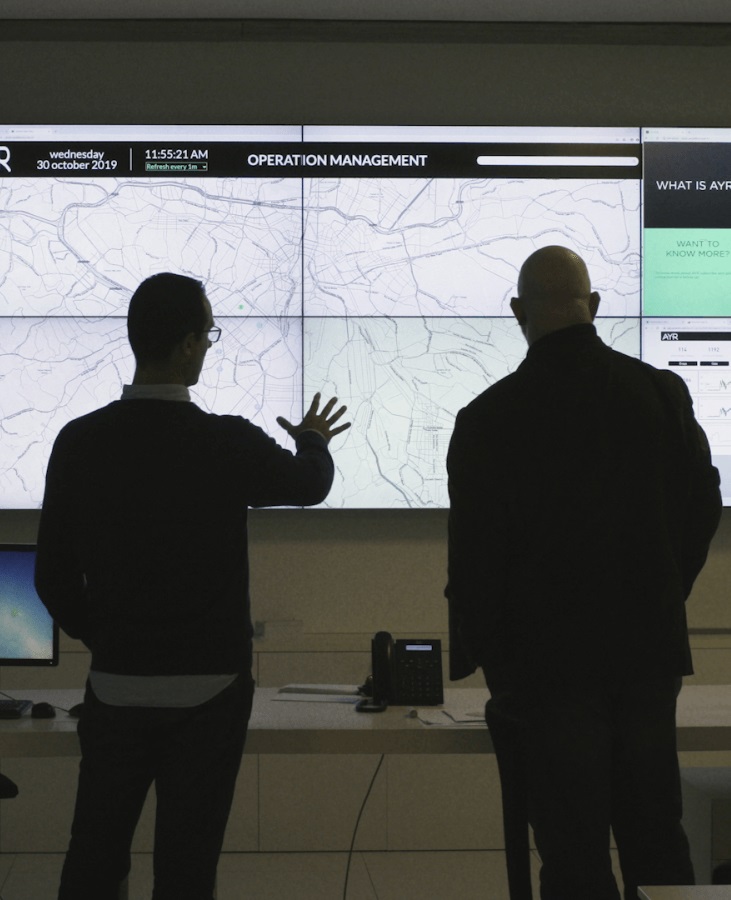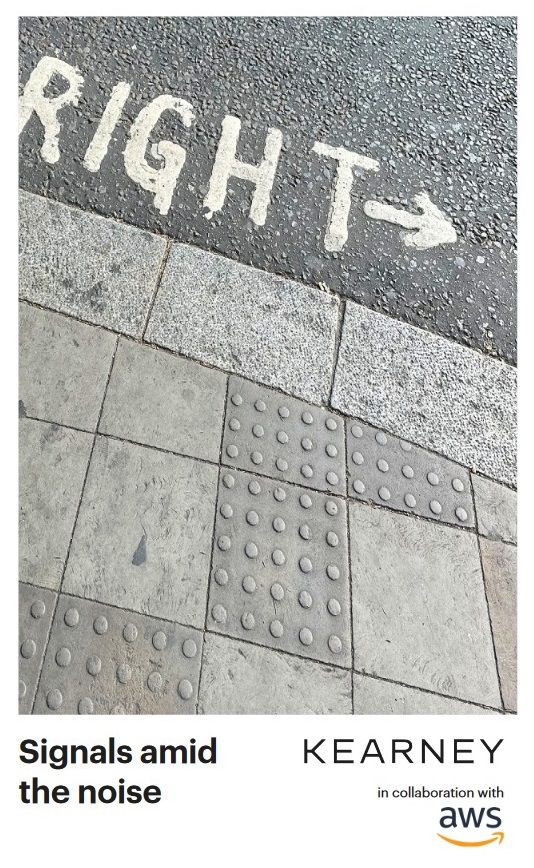- AWS Executive Insights›
- Data-Driven Insights›
- AI-Powered Demand-Sensing
AI-Powered Demand-Forecasting: Transforming Supply Chain Planning
Learn how demand-sensing technology can improve supply chain forecasting in this report from Kearney and AWS.
AI-driven demand-sensing supply chain technology
Companies have built resilience into their supply chains post-pandemic, shifting their focus from reactive adaptation to proactive strategic planning. However, today's market—with factors like multiple sales channels, changing consumer trends, and unexpected global events and political tensions—makes accurate forecasting incredibly challenging.
The transformative potential of AI-driven demand-sensing technology is reshaping supply chain forecasting and planning processes. This innovative approach leverages a wealth of internal supply chain and external market data to enhance the accuracy of predictions—even within the context of constant market volatility.

Smarter forecasts start with AI demand forecasting
Volatile markets, shifting consumer behavior, and global disruptions make accurate planning harder than ever. The ebook Signals Amid the Noise explains how combining AI demand forecasting techniques with the scalability of the AWS supply chain toolkit lets businesses sense demand in near real time, then act before competitors even see the change. By fusing live point-of-sale data, weather feeds, social sentiment, and 200 + external signals, the Kearney–AWS demand-sensing platform delivers double-digit accuracy gains and faster, data-driven decisions.
If your team is embarking on a digital supply chain transformation, this report shows how AI-powered demand sensing becomes the foundation for responsive, resilient operations.

What you’ll learn in the ebook
- Why traditional spreadsheets miss sudden demand shocks—and how AI-powered demand sensing closes that gap.
- The reference architecture behind Kearney’s cloud-native solution, ingesting 200+ data sources and running advanced ML models on AWS.
- Proven results: 10–20% forecast-accuracy improvement, 5–10% inventory reduction, and up to 2% revenue lift.
- A step-by-step roadmap from data ingestion and feature engineering to model governance and continuous improvement.
- Change-management tips for scaling AI across supply chain, finance, and commercial teams.

How demand-sensing differs from conventional forecasting:
- It recognizes the need for a richer set of sourcing, production operations, shipment, order, inventory, and sales data encompassing the complexities of today’s supply chains.
- Data is captured, structured, integrated, and shared in near-real time.
- External data is increasingly crucial both because of data availability and validation.
- It uses artificial intelligence (AI) and machine learning (ML), guided by human intervention, to fill in visibility gaps.
- Demand sensing solutions can build precise, short-term forecasts of customer demand on a daily or even hourly basis.

Demand sensing in supply chain management
Demand sensing, powered by artificial intelligence and machine learning, offers real-time insights into customer behaviors and potential outcomes, addressing the many complexities of today's supply chains. By capturing, structuring, and sharing data in near-real time, it provides a current, transparent, and dynamic view of the supply chain. This also creates a shift from traditionally adversarial relationships among supply chain partners to more collaborative work grounded in shared objectives.
Through the integration of external data from suppliers and vendors, demand sensing technology not only enhances the accuracy of forecasting but also encourages better collaboration across the entire supply chain ecosystem.


Even the highest-quality internal data is, by itself, no longer sufficient for extrapolating the future.
Kearney Supply Chain Institute and AWS
External data is increasingly crucial
And not only because 80 percent or more of today’s supply chain data is now generated externally, by suppliers, vendors, end users, and third parties. It is also important for validation, since recent historical internal data is often corrupted for forecasting purposes by the impacts of COVID. When it comes to demand sensing in supply chain, history is no longer a useful indicator of the future.
Demand sensing in supply chain operations
Demand sensing is an advanced forecasting method that uses real-time data, machine learning, and analytics to reduce forecast errors and better predict customer demand. This capability forms the building block for modern AI demand forecasting programs that require granular, up-to-the-minute signals.
Demand sensing integrates internal sales data, inventory levels, and external factors such as market trends and social-media sentiment. By leveraging machine learning in demand forecasting, businesses analyze this information in near real time. Algorithms detect patterns that conventional methods miss, enabling supply-chain teams to pivot almost immediately.
While both practices aim to predict future demand, demand sensing captures present-day shifts using current data, making it more agile than traditional supply chain forecasting approaches that rely mainly on historical trends.
Demand planning aligns inventory and production to meet customer needs. Demand sensing feeds this process with real-time insights, serving as a cornerstone of AI supply chain solutions that minimize stockouts and excess stock.
Integrating demand sensing can dramatically improve forecast accuracy, inventory turns, and service levels. Early adopters report meaningful gains in supply chain optimization with AI, directly impacting the bottom line. Download Signals Amid the Noise to explore real-world case studies, implementation playbooks, and actionable next steps for your organization.
► Download Signals Amid the Noise